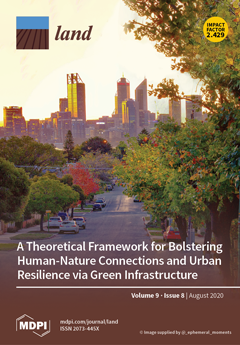This paper examines the spatial pattern of food discount stores in Switzerland, where private actors made location decisions without interference from planning regulations until 2016. Using aerial images and a classification scheme with functional and morphological attributes, the study shows…
Context and Background:Women represent close to 51% of the Cameroonian population and they are more than 70% active in food and market gardening activities (INS, 2010). To this end, they need land and capital to carry out their activities in order to make agriculture profitable and ensure food…
Springs are the most important source of water for the people in the mid-hills of the Himalaya. Emerging evidence shows that they are increasingly drying up, causing numerous hardships for people, with those impacts being felt more acutely by women and members of vulnerable communities like…
This Synthesis Report (SYR) of the IPCC Sixth Assessment Report (AR6) summarises the state of knowledge of climate change, its widespread impacts and risks, and climate change mitigation and adaptation, based on the peer-reviewed scientific, technical and socio-economic literature since the…
In Central Asia, more than 90 % of annually renewable water resources are consumptively utilized in irrigation, and allocation conflicts between large-scale hydropower in the upstream and irrigation in the downstream occur regularly and mostly across complex international borders, especially…
Intensive agriculture is among the main drivers of diversity decline worldwide. In Central Europe, pressures related with agriculture include habitat loss due to the consolidation of farming units, pesticide and fertilizer use, and shortened crop rotations. In recent decades, this development…
The near elimination of inland salt marshes in Central Europe occurred throughout the 19th and 20th centuries, and the currently remaining marshes exist in a degraded condition. This work examines the impact of groundwater level on the growth of plants from a seed bank obtained from a degraded…
Forests cover about 40 % of the European Union (EU), providing a wide spectrum of invaluable ecosystem services to more than half a billion people. In order to protect and harness this crucial asset, EU policies are advancing multifunctional management. This study lays a basis for such an effort…
Tree root systems stabilize hillslopes and riverbanks, reducing landslide risk, but related data for the humid tropics are scarce. We tested fractal allometry hypotheses on differences in the vertical and horizontal distribution of roots of trees commonly found in agroforestry systems and on…
Spatial planning plays an important role in cropland protection, but its effectiveness is often questioned in the face of ongoing urban and infrastructure growth. Moreover, methods to assess the effectiveness of spatial planning are lacking. In Switzerland, the revision of the national spatial…
Smallholder farmers grow a major share of the food consumed around
the world and preserve rich, biodiverse landscapes.1
But despite their
fundamental importance, many small farmers lead lives of deepening
vulnerability – caught between subsistence strategies threatened…






